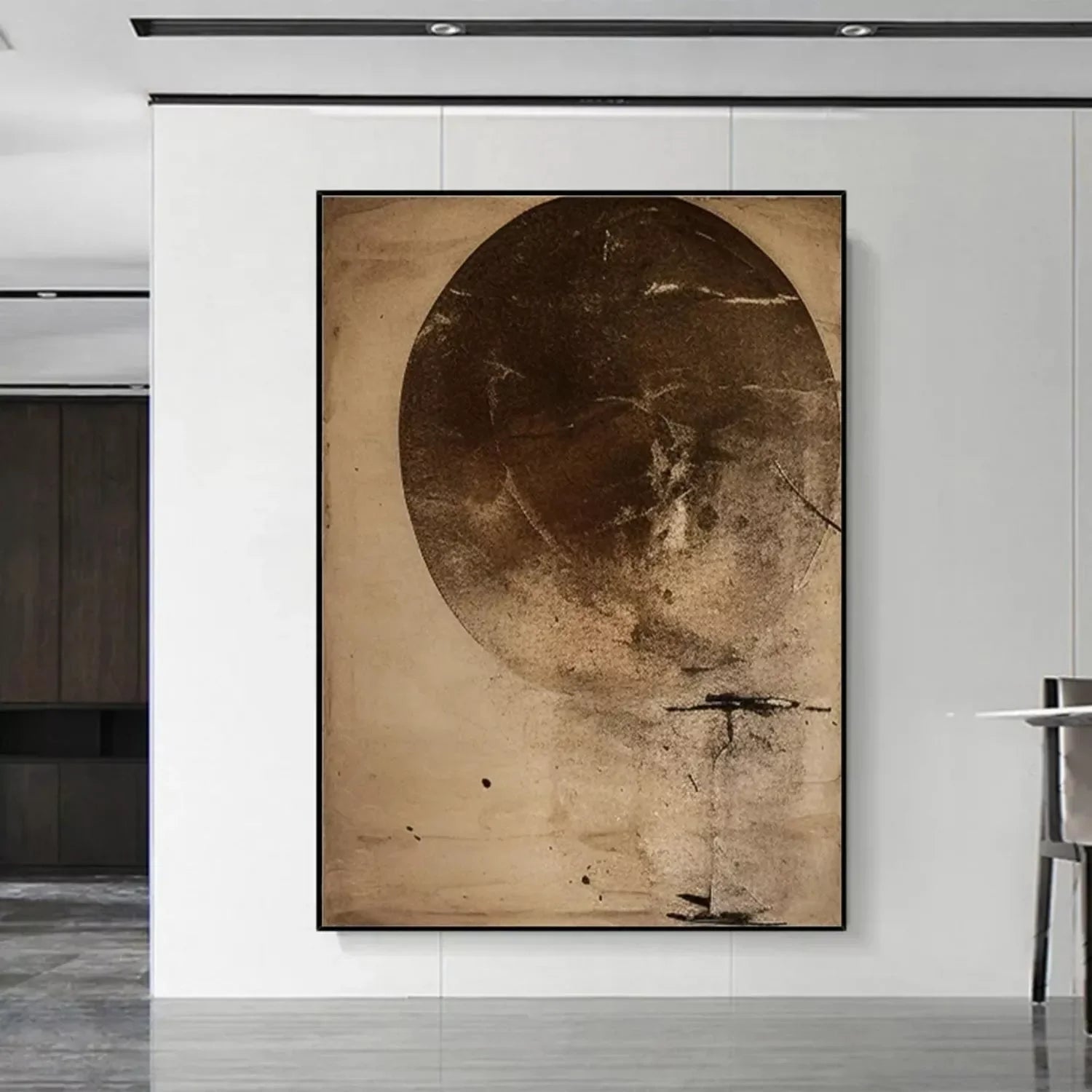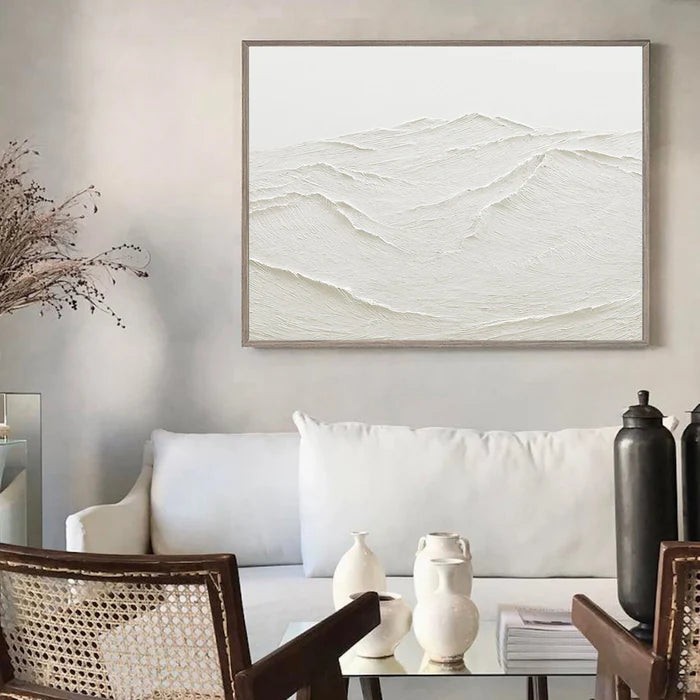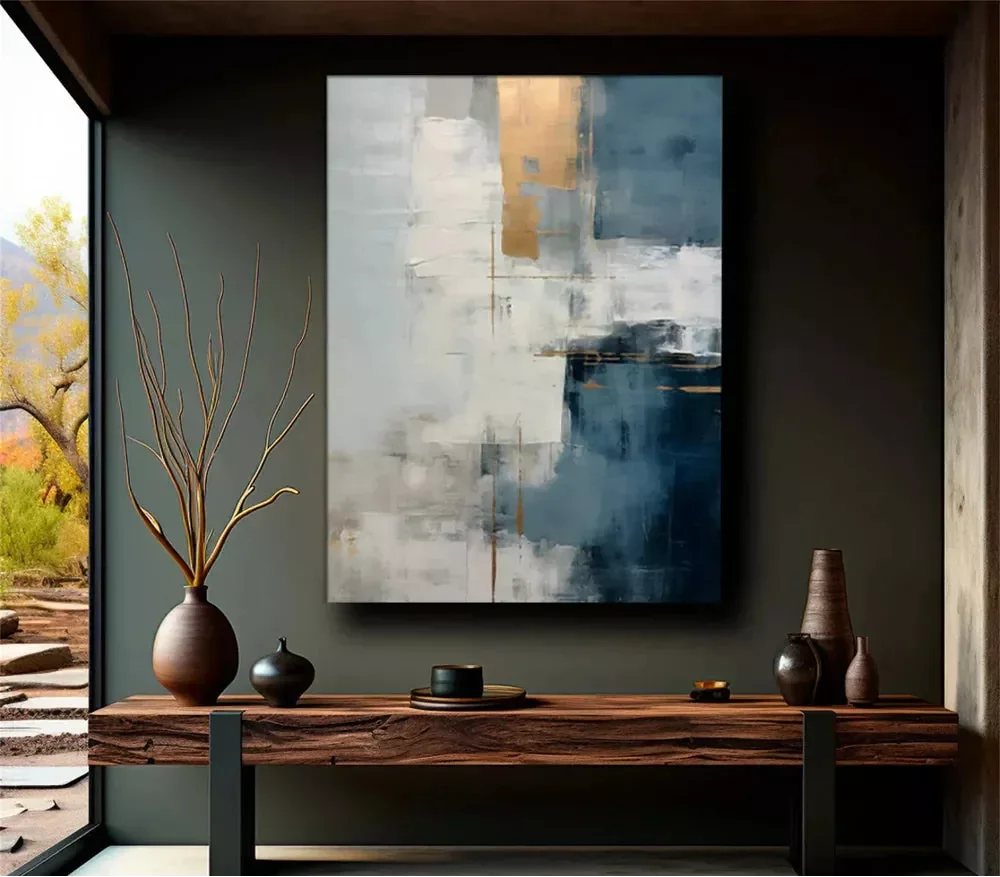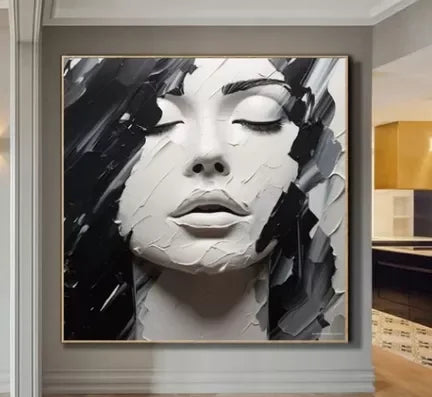
Explore the Painting Impermanence Art of Wabi Sabi Meaning
In a world that often shouts for perfection, glossy finishes, and flawless newness, there is a whisper that speaks of a different kind of beauty. It’s found in the crack in a cherished ceramic cup, the muted grey of weathered wood, and the quiet, asymmetrical elegance of a single branch against the sky. This whisper is the heart of a profound Japanese aesthetic philosophy. For those seeking decor with depth, understanding the wabi sabi meaning is the first step toward transforming a space into a sanctuary of authenticity. This philosophy comes to life most powerfully on canvas, through the painting impermanence art of wabi sabi meaning, which captures the fleeting, the imperfect, and the incomplete in a way that is both serene and deeply moving. This exploration will delve into this captivating concept, guiding you on how to bring its tranquil essence into your own home.
Part 1: What Does Wabi-Sabi Mean?
To truly appreciate the art, we must first ask: what does wabi sabi mean? It’s a concept that feels complex but is rooted in simplicity. Historically, the term combines two ideas. “Wabi” originally referred to the loneliness of living in nature, remote from society; it evolved to signify rustic simplicity, quietness, and a freshness that feels understated. “Sabi” meant “withered” or “cold”; it transformed to denote the beauty that comes with age, the patina on a surface, the graceful acceptance of impermanence.
Together, they form a worldview that finds beauty in the authentic, the modest, and the imperfect. It is the antithesis of the mass-produced and the pristine. It’s the appreciation of a hand-thrown pot over a perfectly symmetrical machine-made one, the love for a faded textile that holds memories, and the peace found in a silent, misty morning. The core wabi sabi meaning is about accepting the natural cycle of growth, decay, and death, and seeing the profound beauty within that cycle. It’s not about sadness or neglect, but about authenticity and thoughtful simplicity.
Part 2: The Art of Wabi Sabi Meaning: Principles in Practice
When this philosophy is translated into a visual form, we begin to understand the art of wabi sabi meaning. It’s not a specific style but a set of guiding principles that inform an artist’s approach. These principles are the soul of every piece that embodies this aesthetic.
The first principle is Imperfection (Kanso). In the art of wabi sabi meaning, asymmetry, irregularity, and roughness are not flaws; they are essential features. They tell a story and prove that an object is unique and has been touched by life.
The second is Impermanence (Mujō). This is a central tenet, the acknowledgment that nothing lasts, nothing is finished, and nothing is perfect. Art that embraces this feels alive and transient, capturing a moment that is already fading.
The third principle is Incompleteness (Fukinsei). This suggests that the viewer is an active participant in the artwork. By leaving things unsaid or unfinished, the artist allows our imagination to complete the narrative, making the experience personal and introspective. This art of wabi sabi meaning encourages a mindful appreciation for what is, rather than what could be.
Part 3: Explore the Painting Impermanence Art of Wabi Sabi Meaning
Nowhere are these principles more evocative than in painting. The painting impermanence art of wabi sabi meaning is a physical manifestation of this philosophy. Artists who work in this style use their medium to capture the essence of time’s passage.
How is this achieved? Firstly, through a restricted, earthy color palette. Think of the colours of nature in its quietest moments: the grey of stone, the brown of sun-baked clay, the soft green of moss, and the muted white of bleached bone. These subdued tones create a feeling of calm and timelessness.
Secondly, texture is paramount. Artists employ techniques that highlight the materiality of the paint: visible brushstrokes, layers that are sanded back to reveal what’s beneath, and cracks that are allowed to form. This texture is a record of the painting’s creation, its own history etched onto its surface.
The subject matter is often abstract or suggestive. Rather than a hyper-realistic landscape, a painting impermanence art of wabi sabi meaning might evoke a memory of a landscape, a feeling of weather, or a simple, solitary form. It is this very ambiguity that invites contemplation. This impermanence art of wabi sabi meaning isn’t depressing; it is liberating. It is a visual sigh of relief, giving us permission to let go of the pursuit of perfection and instead find a deep, resonant peace in the authentic and the fleeting.
Part 4: Bringing Wabi-Sabi Home: The Power of Art Prints
Integrating this serene aesthetic into your daily life is simpler than it seems, and incredibly effective in creating a calming home environment. This is where the accessibility of art prints art of wabi sabi meaning becomes a powerful tool. High-quality art prints allow you to own a piece of this philosophical beauty without the commission price of an original, making the art of wabi sabi meaning accessible to all.
A well-chosen print can serve as a daily reminder to slow down and appreciate the imperfect beauty of the present moment. When styling your space, consider placing your art prints art of wabi sabi meaning in areas of retreat and reflection: a bedroom wall for quiet morning contemplation, a reading nook to enhance a sense of solitude, or an entryway to set a tranquil tone for your home. Pair them with natural materials like raw wood, linen, stone, and handmade pottery to create a cohesive and grounded atmosphere. The impermanence art of wabi sabi meaning on your wall is more than decor; it is a focal point for mindfulness.
Part 5: Discover Your Moment of Peace at Eleanos Gallery
If this philosophy resonates with you, the journey to find the perfect piece begins at Eleanos Gallery. We have meticulously curated a collection that truly embodies the authentic painting impermanence art of wabi sabi meaning. Our gallery features artists who masterfully capture the essence of wabi-sabi, from its textured, tactile surfaces to its soul-soothing color palettes.
Each piece in our Wabi-Sabi collection is chosen for its ability to evoke a sense of peace, authenticity, and thoughtful simplicity. We believe that art should do more than fill a space; it should transform it and enrich your daily life. Browsing our collection is an experience in itself—an invitation to pause, reflect, and discover the artwork that speaks directly to your desire for a more mindful and beautiful home.
We invite you to explore our gallery and find a piece that captures your heart. Let your space tell a story of authenticity and calm. Discover the perfect piece of wabi-sabi art for your home in our curated collection at Eleanos Gallery.
Conclusion
The journey through the wabi sabi meaning reveals more than an aesthetic; it offers a lens through which to see the world—and art—differently. It teaches us to find beauty in the cracks, the folds, and the faded spots. It encourages us to appreciate the humble, the handmade, and the imperfect. The painting impermanence art of wabi sabi meaning is a powerful testament to this philosophy, offering a visual sanctuary that reminds us of the elegant, peaceful beauty inherent in life’s natural cycle. By welcoming this art into your home, you are not just choosing a decoration; you are choosing a mindset, a moment of peace, and a daily celebration of authentic beauty.








